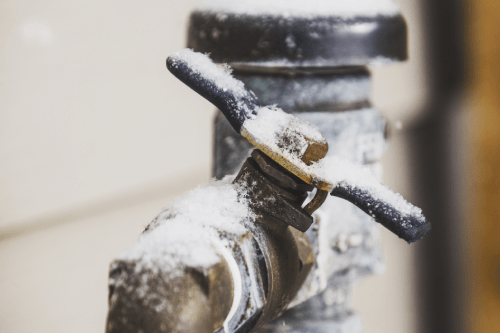Tips for Preventing Frozen Pipes in Cold Weather: Specialist Insights
Tips for Preventing Frozen Pipes in Cold Weather: Specialist Insights
Blog Article
The article down below involving How To Avoid Freezing Pipes is relatively entertaining. You should investigate for yourself.

Cold weather can ruin your plumbing, especially by freezing pipelines. Below's how to stop it from taking place and what to do if it does.
Intro
As temperature levels decrease, the risk of icy pipelines boosts, potentially leading to pricey fixings and water damage. Understanding just how to avoid frozen pipelines is important for property owners in cool climates.
Recognizing Frozen Pipelines
What triggers pipelines to freeze?
Pipelines freeze when subjected to temperatures below 32 ° F (0 ° C) for expanded periods. As water inside the pipes ices up, it expands, putting pressure on the pipeline walls and potentially triggering them to break.
Risks and problems
Icy pipelines can result in water system disturbances, residential or commercial property damages, and pricey fixings. Burst pipes can flood homes and trigger substantial structural damage.
Signs of Frozen Water Lines
Identifying frozen pipes early can prevent them from breaking.
Just how to determine frozen pipelines
Look for reduced water circulation from faucets, unusual odors or noises from pipelines, and visible frost on exposed pipelines.
Prevention Tips
Insulating vulnerable pipes
Cover pipelines in insulation sleeves or utilize warmth tape to protect them from freezing temperatures. Focus on pipes in unheated or external locations of the home.
Home heating methods
Maintain interior spaces adequately heated up, especially locations with plumbing. Open up cupboard doors to permit cozy air to distribute around pipes under sinks.
Protecting Outdoor Pipes
Yard pipes and outdoor taps
Disconnect and drain pipes garden hoses prior to winter. Set up frost-proof spigots or cover outdoor taps with shielded caps.
What to Do If Your Pipelines Freeze
Immediate activities to take
If you believe icy pipelines, keep faucets open to ease pressure as the ice melts. Utilize a hairdryer or towels soaked in warm water to thaw pipes slowly.
Long-Term Solutions
Structural changes
Take into consideration rerouting pipes away from exterior wall surfaces or unheated areas. Include extra insulation to attics, cellars, and crawl spaces.
Updating insulation
Buy high-grade insulation for pipelines, attic rooms, and wall surfaces. Proper insulation assists keep consistent temperatures and reduces the risk of icy pipelines.
Verdict
Protecting against frozen pipelines needs proactive actions and quick actions. By understanding the causes, indications, and preventive measures, house owners can shield their plumbing during cold weather.
6 Proven Ways to Prevent Frozen Pipes and Protect Your Home
Disconnect and Drain Garden Hoses
Before winter arrives, start by disconnecting your garden hoses and draining any remaining water. Close the shut-off valves that supply outdoor hose bibs and leave the outdoor faucet open to allow any residual water to drain. For extra protection, consider using faucet covers throughout the colder months. It’s also important to drain water from any sprinkler supply lines following the manufacturer’s directions.
Insulate Exposed Pipes
Insulating your pipes is an effective way to prevent freezing. Pipe insulation is readily available at home improvement stores and is relatively inexpensive. Pay close attention to pipes in unheated areas such as the attic, basement, crawl spaces, or garage. Apply foam insulation generously to create a buffer against the cold. You can also wrap your pipes in heat tape or thermostat-controlled heat cables for added warmth.
Seal Air Leaks
Inspect your home for any cracks or openings that could let in cold air. Seal any holes around the piping in interior or exterior walls, as well as the sill plates where your home rests on its foundation. Additionally, make sure to keep your garage door closed unless you’re entering or exiting. Leaving it open creates a significant air leak that can lead to frozen pipes.
Allow Warm Air Circulation
During cold snaps, it’s essential to allow warm air to circulate evenly throughout your home. Leave interior doors ajar to promote better airflow. Open kitchen and bathroom cabinets to help distribute heat consistently around the rooms. If you have small children or pets, be sure to remove any household chemicals or potentially harmful cleaners from open cabinets for safety.
Let Faucets Drip
A small trickle of water can make a big difference in preventing ice formation inside your pipes. When temperatures drop significantly, start a drip of water from all faucets served by exposed pipes. This continuous flow helps prevent the water from freezing. Additionally, running a few faucets slightly can relieve pressure inside the pipes, reducing the chances of a rupture if the water inside does freeze.
https://choateshvac.com/6-proven-ways-to-prevent-frozen-pipes-and-protect-your-home/

Hopefully you liked our article on Winter Plumbing Precautions: Preventing Frozen Pipes. Thanks a lot for taking the time to read our post. Are you aware of someone else who is looking into the niche? Why not promote it. We love reading our article about How To Avoid Freezing Pipes.
This Page Report this page